Cycling: How to clean your bike chain | Eco-friendly | Maintenance
Heeeyho Readers! Let's see how to clean a bicycle drivetrain without making a mess.
Warning: using kitchen cleaning products to clean bicycles may come with shoutings from moms, wives, or roommates. Use with caution and don't forget to ask permission.
Yoooo sexy freaks! Jokes aside, I was preparing my bicycle to race on Sunday, and I thought sharing some maintenance tips would come in handy for the Hive fellas. We all know that a well-maintained machine lasts more, gives fewer headaches, and spares us some money in parts. However, as a cyclist, I understand how cleaning the drivetrain is messy, sticky, and a pain in the behind. Well... not anymore!
The drivetrain of a bike consists of all the parts used to push (or pull) the bike along. The key components are the pedals, cranks, chainrings, chain, cogs (cassette), and derailleur. Due to everyday use, the drivetrain becomes gunky, especially the chain, cogs, and pulley wheels, thus requiring constant cleaning and lubing.
In this post, I'll show you how to clean a bicycle drivetrain (chain, cogs, chainring, and derailleur) without making a mess and harming the environment. Remember: You must use quality oils (wax) for better results on future cleanings. Let's go.

Before starting, it's worth mentioning that I only use wax-based oils on my chain. Wax-based oils are easier to apply and clean, thus yielding better results, as shown below. Wet oils (common machine oils) will also clean up but may require more brushing.
I've seen people use gasoline, diesel, kerosene, and all sorts of chemicals to clean their chains. Not only do these products stink, but they also harm the environment, rubber parts, and our skin. Other cyclists use purpose-built degreasers. I, however, obtained superb results with a simple kitchen degreaser. The kitchen degreaser is:
- cheap
- harmless
- removes chain gunk beautifully
During the process we'll use: kitchen degreaser, a brush, a cloth, water, wd40 (optional), and chain wax.
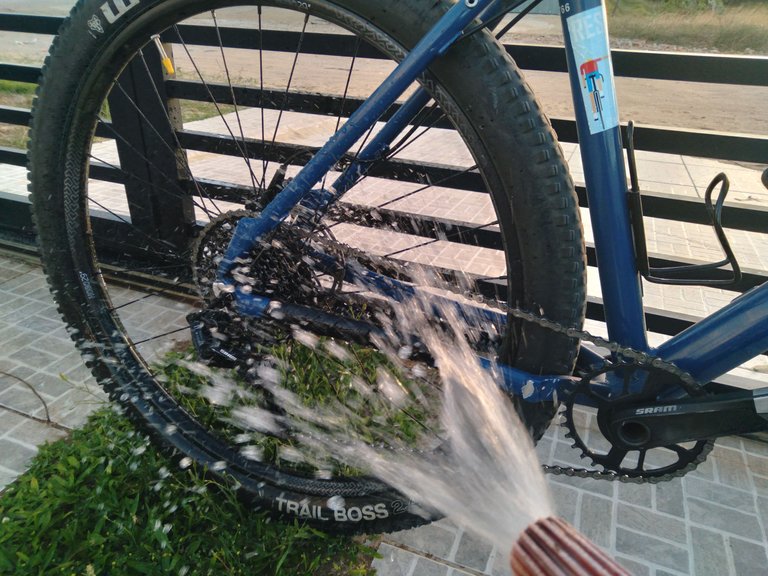
Avoid pressure washers! Pressurized water may remove grease and oil from other drivetrain parts, which is not intended. You can use a garden hose from the distance to wet the drivetrain and remove any surface sand or mud. Back-pedal the cranks to make sure everything is wet. Once removed the heavier dirt, we can start brushing.
Tip: make sure your bicycle is in first gear. When in first gear, the derailleur is stretched, thus granting easier access to the jockey wheels.
Squeeze degreaser on the brush and begin by back-pedaling the cranks while brushing the cogs and jockey wheels. Don't stick yer fat fingers in there! Brush the drivetrain until there's no dirt left. Next, you'll clean the chain itself.
The technique I use consists of holding the chain in between the brush and cloth. This way, the degreaser penetrates the chain, removing all the gunk from the pins and rollers. Do it on both sides. With the brush on top and below the chain. More back-pedaling! You can see how the old wax stays on the cloth while the chain becomes oil-free. Rinse everything with water.
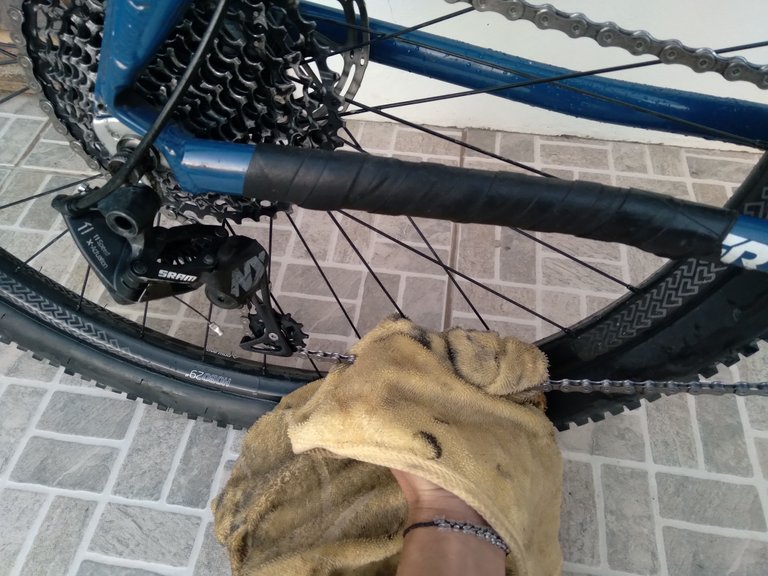
After rinsing the drivetrain, it's important to dry the parts. I use an old towel for that. I also apply Wd-40 to the towel to rub on the external links of the chain. This step is crucial if you, like me, live near the sea. WD-40 is not lubricant! It just serves as surface protection against corrosion.
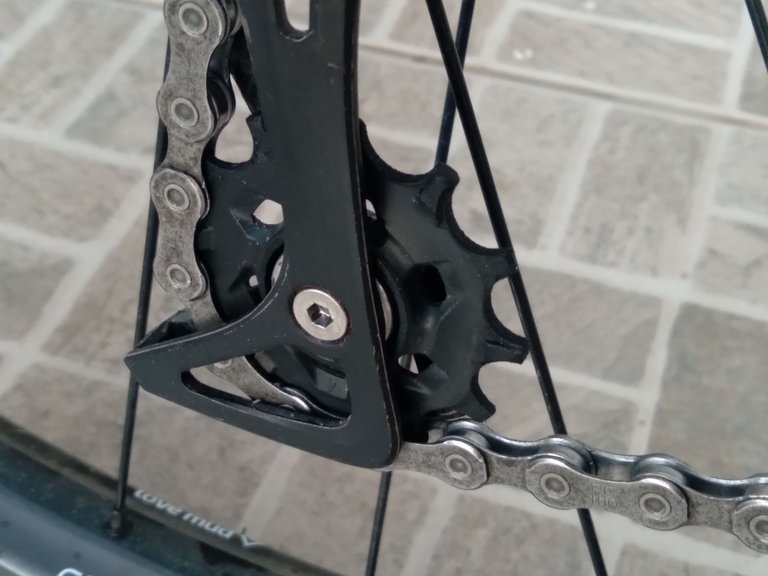
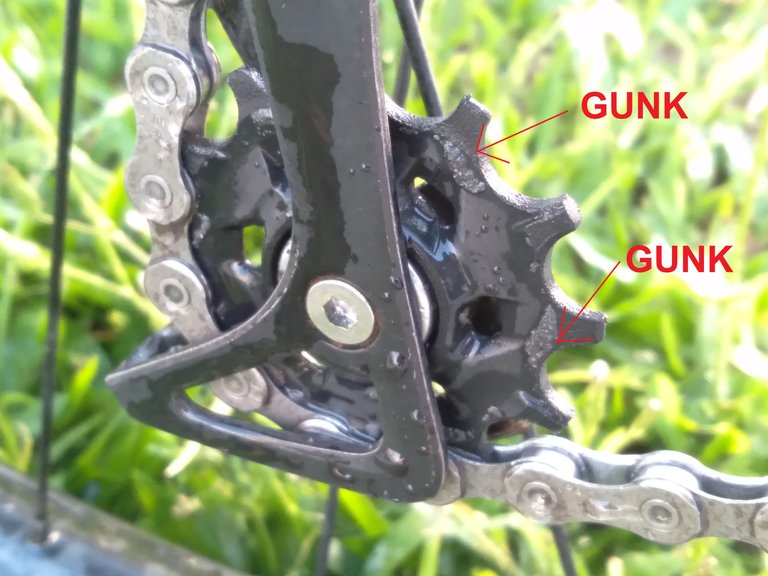
The final result is quite astonishing for such an inexpensive degreaser. The chain is gunk-free, and the rollers and pins are clean and shiny. The chain faces are now protected from rust by a thin layer of WD-40 and ready for new lub.
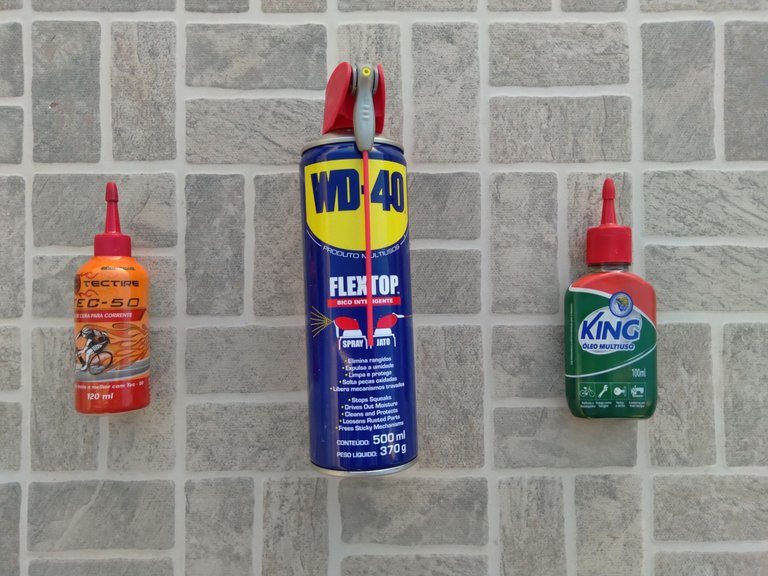
Always remember: WD-40 is not lubricant! That said, the picture above shows two different kinds of chain lubricants. On the left, there's the dry lubricant, also known as wax. On the right, there's the wet lubricant, or thin oil.
Wax lubricants come in two types, for dry weather and wet conditions. I use wax for dry weather. Oils, on the other hand, are mostly used in wet conditions, since they'll not rinse out. I prefer to use wax to avoid gathering sand and dust on the drivetrain.
There are thousands of brands and types of oils out there, so I'd advise you to ask a mechanic which type is best for you.
The last step in this adventure is to re-lub the chain.

Once the drivetrain is clean and dry, you can start applying new lubricant to it. Bicycle chains do not require immense amounts of oil; one drop per roller is enough. In the picture above, you can see how thick wax-based lubricants are.
Tip: one drop per roller. If you start from the missing link, it's easier to know where you started.
Once the whole chain is lubricated, you can back-pedal a few times. Remember that wax-based lubs require some time to harden (one hour at least, unless you are in a hurry.)
Ready to go!
The bicycle is ready for shreddy. A well-maintained drivetrain is a synonym for healthier gear changes and fewer frustrations.
I hope these tips are useful for those wanting to dive-bomb into the cycling world. Don't forget to wear a helmet and have fun!
Peace.
Did you know that I have a book out? Check this!
Access Link: https://www.amazon.com/dp/6500272773?
If you enjoyed this post consider leaving your upvote for a hot coffee.
Find me on Twitter: https://twitter.com/mrprofessor_
~Love ya all,

Disclaimer: The author of this post is a convict broke backpacker, who has travelled more than 10.000 km hitchhiking and more than 5.000 km cycling. Following him may cause severe problems of wanderlust and inquietud. You've been warned.


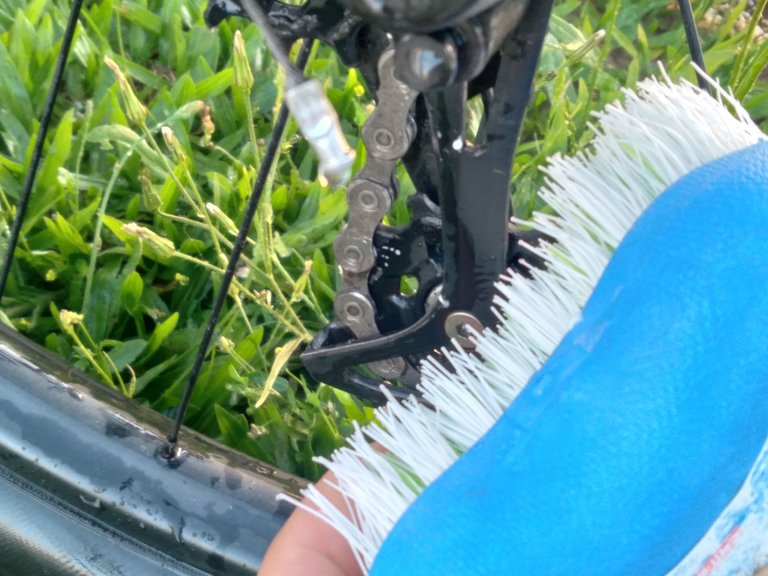
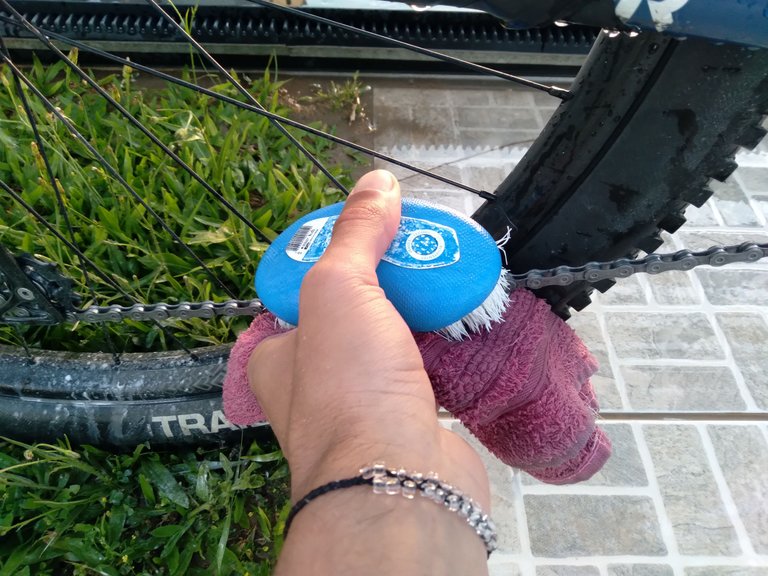


https://twitter.com/mrprofessor_/status/1459344083751682053
The rewards earned on this comment will go directly to the person sharing the post on Twitter as long as they are registered with @poshtoken. Sign up at https://hiveposh.com.
Did not know that Cif, Wax, WD-40, and Oil would be Eco-friendly 😆
Yeah, not entirely, but the amount of oil on the chain and so minimal =/ other than that the brands claim wax-based stuff are less harmful.
Cleaning is the problem, when people use diesel or gasoline 🤢
Awesome, every time I've cycled through the mountain bogs it's been great to protect it. Sometimes lazy to ignore it. I have to pay the first price for that car when it is processed and shipped. Time here I have learned a lot. thank you for sharing